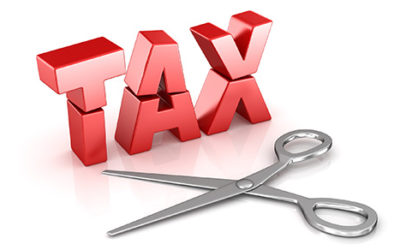In April, The Small Business Association (SBA) issued the Paycheck Protection Program (PPP) to help companies that were affected by the COVID-19 pandemic. The PPP gave loans to small companies with less than 500 employees to help pay for their employee’s payroll. Under the PPP, companies would be allowed to get forgiveness for their loans, as long as the money was spent on certain forgivable expenses. At the beginning of June, the president signed the PPP Flexibility Act, which adjusted some of the rules of the PPP by broadening some of the classifications of forgivable expenses. This then allowed more borrowers to receive more forgiveness. Since then the SBA has continued to issue Interim Final Rules, which continue to make it easier for borrowers to get forgiveness on their loans. Here is a PPP loan forgiveness update, with some of the changes that have happened since the signing of the Flexibility Act:
Extension of maturity date on the loan. Originally, the maturity date of the PPP loans was set to 2 years. However, that date has been adjusted to be 5 years, depending on when the loan was issued. All loans made after June 5 will have an automatic maturity date of 5 years. For any of the loans made before then, the maturity date can be extended from 2 years to 5 years, as long as both the lender and borrower can agree to make the extension.
Deferral of loan payments. As long as the loan application is filed within 10 months of the end of the covered period, the borrower will be able to defer their payments on both interest and principal. Until the SBA remits the payment to the lender, the borrower will not have to make any payments on their loan. If the forgiveness application is not submitted on time, however, payments will be due as soon as the covered period is over.
Submitting for forgiveness application early. Applicants can now apply for forgiveness before their covered period is over. As soon the borrower has used up all of the money they would like to get forgiveness for, the borrower can apply for forgiveness. If the borrower has a decrease in either number of employees or wages and salaries, they will face a decrease in forgiveness. If applying early, they do not have the ability to use the safe harbor of December 31, 2020 to restore wages and number of employees to previous levels.
Decreases in employee count. If a borrower is not able to rehire employees, they will not be able to get forgiveness on their total loan. However, if they are able to prove the circumstances were out of their control, this decrease in the number of employees will not count against them. The borrower will have to prove that they were unable to to return to the same level of business activity as the business was operating before February 15, 2020 due to compliance with requirements established or guidance issued by the Secretary of Health and Human Services, the Director of the Centers for Disease Control and Prevention, or the Occupational Safety and Health Administration between March 1, 2020 and December 31, 2020, related to the maintenance of standards for sanitation, social distancing, or any other worker or customer safety requirement related to COVID-19.
New 3508-EZ Form. If the borrower fulfills certain conditions, they might be eligible to file the form 3508-EZ instead of the form 3508. The Form 3508-EZ is a shorter form and is geared towards those who did not have employees, did not have a reduction in number of employees, or did not have a decrease in wages or salaries.
Deferral of employer portion of social security taxes. Employers can now choose to defer the employer portion of the social security tax. They have until December 31, 2021 to pay 50% of the deferred amount. The rest of the amount must be paid by December 31, 2022.
This is just an overview of some of the most recent PPP loan forgiveness update published by the SBA. There are many other factors that could affect a lender’s ability to get forgiveness on their loans. For more information, or to talk about how this new guidance affects your situation, contact us.


